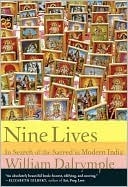More on this book
Community
Kindle Notes & Highlights
Read between
May 2 - September 5, 2022
The idea for this book was born sixteen years ago, on a high, clear, Himalayan morning in the summer of 1993. I was corkscrewing my way up from the banks of the river Bhagirathi, along the steep sides of a thickly wooded valley.
I was not alone on the road. The previous night I had seen groups of pilgrims – mainly villagers from Rajasthan – camping beside the temples and bazaars at the bottom of the mountain, warming their hands over small driftwood fires.
Every half mile or so I would come across groups of twenty or thirty villagers straining up the steep mountain path.
As I clambered up the track, I fell into conversation with an ash-smeared and completely naked sadhu of about my own age.
‘I have been a sanyasi [wanderer] only for four and a half years,’ he said. ‘Before that I was the sales manager with Kelvinator, a Bombay consumer electricals company.
In the summer of 1933, a young Harvard classicist named Milman Parry caught a ship to Yugoslavia. Parry set off on his travels intending to prove in the field a brilliant idea he had dreamed up in the libraries of Cambridge, Massachusetts: that Homer’s works, the foundation upon which all subsequent European literature rested, must have originally been oral poems. To study Homer properly, he believed, you had first to understand how oral poetry worked, and Yugoslavia was the place in Europe where it seemed such traditions had best survived.
Avdo Mededovich,
What Parry found in the months that followed exceeded all his hopes. By the time he returned to America in September 1935 he had made recordings of no fewer than 12,500 heroic poems, songs and epics – tales of the great Serbian defeat by the Ottomans at Kosovo, or of the deeds of long-dead Balkan heroes – and had accumulated half a ton of aluminium recording discs.
In India, however, it seemed that an even more elaborate tradition had managed to survive relatively intact.
The bard knew the Mahabharata – India’s equivalent of the Iliad, the Odyssey and the Bible all rolled into one.
With its hundred thousand slokas, the Mahabharata is fifteen times the length of the Bible.
India’s population may not be particularly literate – the literacy rate is officially 65 per cent, compared with 77 per cent in the United States – but it remains surprisingly culturally erudite.
As the critic Anthony Lane noted in 2001, in the aftermath of the Islamist attacks on America, the people of New York again and again compared what had happened to them to films or TV: ‘It was like Independence Day’; ‘It was like Die Hard’; ‘No, Die Hard 2.’
In contrast, when the great tsunami struck at the end of 2004, Indians were able to reach for a more sustaining narrative than disaster movies: the apocalyptic calamities and world-ending floods that fill...
This highlight has been truncated due to consecutive passage length restrictions.
As the great American Sanskrit scholar Wendy Doniger put it, ‘Myths pick up the pieces where philosophy throws up its hands. The great myths may help survivors to think through this u...
This highlight has been truncated due to consecutive passage length restrictions.
While the Mahabharata is today the most famous of the Indian epics, it was originally o...
This highlight has been truncated due to consecutive passage length restrictions.
During the Mughal period, for example, the most popular was the great Muslim epic, the Dastan-i A...
This highlight has been truncated due to consecutive passage length restrictions.


